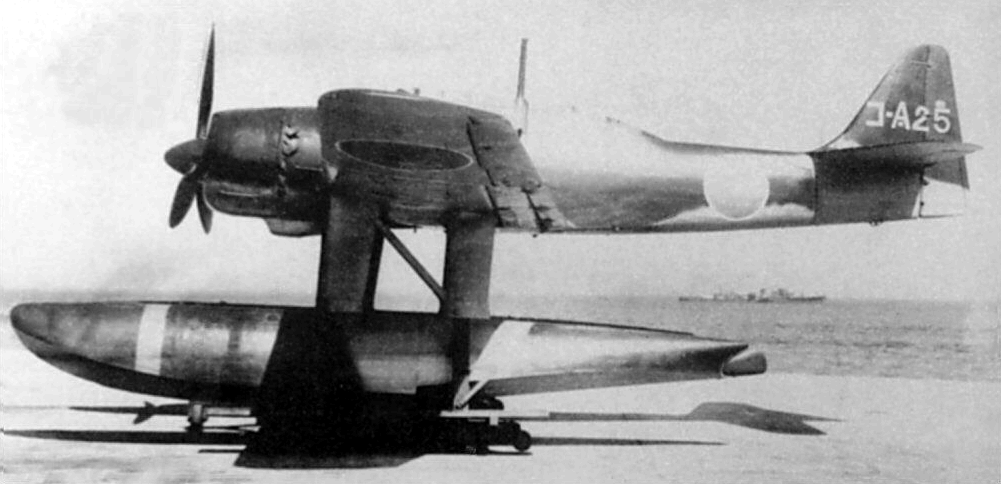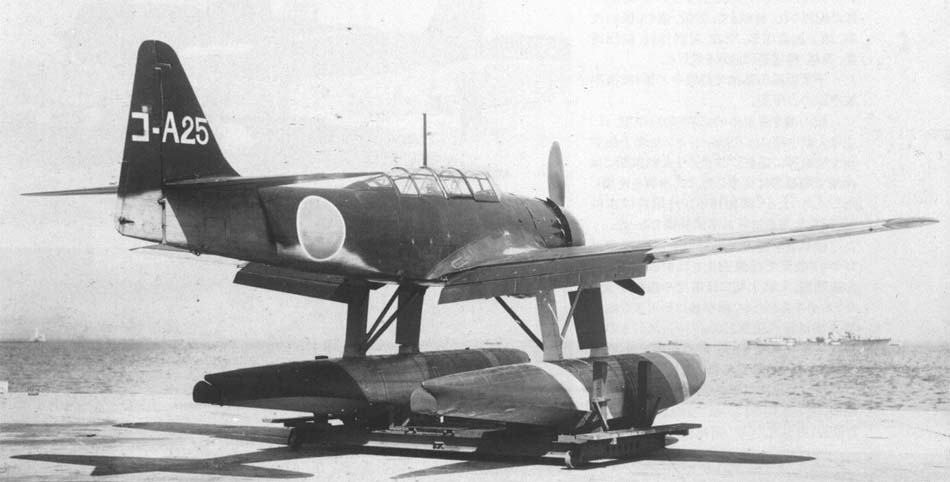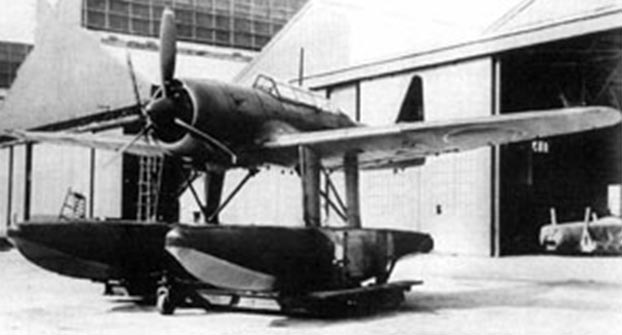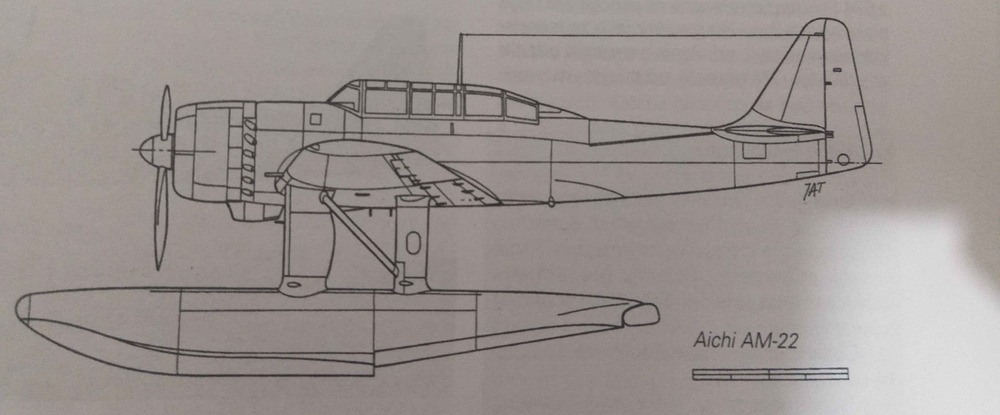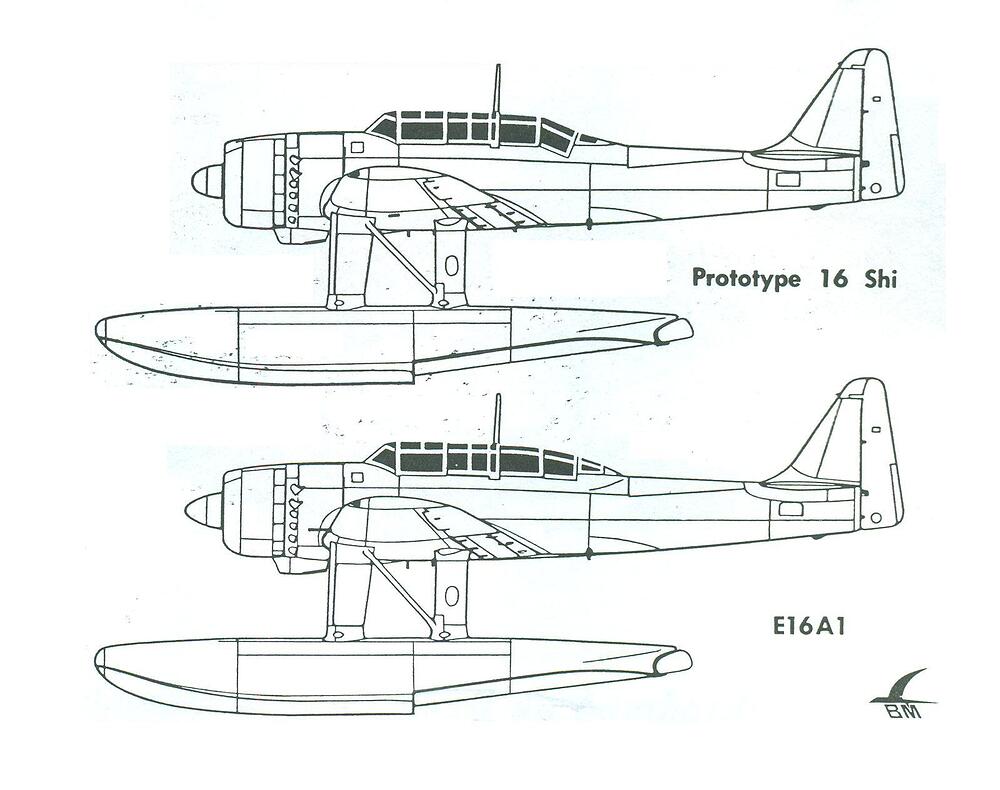- Yes
- No
Aichi E16A first prototype (AM-22) (16試水上偵察機)
The Aichi E16A first prototype (AM-22) is the first prototype of the Aichi E16A1 aircraft, which was created in March 1942. Three prototypes of the Aichi E16A were made, but in this suggestion, I will focus only on the first prototype.
History
In 1939, when work on the Aichi E13A seaplane was still ongoing, the Japanese Navy Command conveyed to the Aichi factories the technical requirements of 14-Shi for a new two-seat reconnaissance seaplane that was to succeed the rejected Aichi E12A and the still-in-development E13A. This caused great confusion at the Aichi plants, which did not know whether the Japanese Navy wanted to abandon the aircraft project for the second time (previously, the Navy had abandoned the 12-Shi Aichi E12A project in favor of a revised Shi-12 specification, from which the Aichi E13A was being developed) or if they wanted to create a new aircraft. The engineers at Aichi were so surprised by the new technical requirements of 14-Shi that they shelved them until the prototype stage of the Aichi E13A was completed. In February 1940, Aichi received more accurate and very challenging to implement technical specifications for 14-Shi, which were as follows:
- Maximum speed over 463 km/h
- Range of over 2500 km
- Requirements for the capability of a dive attack
- The ability to carry a bomb weighing 250 kg was required.
- It was required that the aircraft had good combat capabilities.
Therefore, only in October 1940, work began on a design that matched the Shi-14 specification (at that time it was known that the E13A would enter serial production and service). The project received the internal designation AM-22, and engineer Kishiro Matsuo was responsible for it, while Yasushiro Ozawa was in charge of the aircraft’s aerodynamics. The conceptual work on the aircraft was prolonged significantly, which is why in January 1941, the construction assumptions were changed to 16-Shi. At that point, serious work on the project began, but it was only after a minor modification of the 16-Shi assumptions in July 1941 that AM-22 received the green light to commence work on the prototype. During this time, Aichi AM-22 was designated by the navy as 16, a prototype water reconnaissance aircraft (16試水上偵察機). The first prototype, Aichi E16A, was completed in March 1942 and flew for the first time in May of the same year. The first prototype did not achieve the required maximum speed during tests and had various flaws. The most significant flaw was the aerodynamic brakes mounted on the float mounts, which caused strong and dangerous vibrations. Solving this problem took some time, but it was managed thanks to the use of perforated aerodynamic brake plates (it is not entirely clear whether this solution was implemented in the first or the other prototypes). Additional problems included the poor functioning of the Fowler flaps, weak float bottoms, and insufficient longitudinal stability of the aircraft. Additionally, the first prototype E16A1 was armed only with two Type 97 7.7 mm machine guns in the wings and a movable Type 92 7.7 mm machine gun in the navigator’s position for self-defense, which the navy command deemed insufficient for that time. Solutions to all these problems appeared in prototypes E16A number 2 and 3, but probably E16A prototype 1 was also modified to address some of the issues. Tests of all three prototypes continued until August 1943 when the Aichi E16A was accepted into service as Zuiun Model 11 (瑞雲11型). The first prototype E16A, along with the rest of the prototypes, was likely improved to the E16A1 standard model 11 at a later time and participated in combat operations.
Construction description
The Aichi E16A prototype 1 is a large two-seat seaplane in a low-wing configuration. The aircraft is constructed almost entirely of metal, except for the fabric-covered tail surfaces and wooden wing tips. The wings of the aircraft are hydraulically foldable for storage in a hangar. The aircraft’s landing gear consists of two single-hull metal pontoons attached to the wings by vertical supports shaped like the letter N. At the edge of the flow, aerodynamic brakes are installed on the supports of the floats. The Aichi E16A prototype 1 is powered by a Mitsubishi MK8A Kinsei 51 (Ha-33-51) air-cooled, fourteen-cylinder twin-row radial engine with a takeoff power of 956 kW (1,300 HP). The aircraft’s propeller is a three-blade metal variable pitch with a diameter of 3.3 m. The aircraft is armed with two fixed Type 97 7.7mm machine guns in the wings and one flexible Type 92 7.7mm machine gun in the observer’s position. The aircraft can carry a bomb weighing 180 kg , 60 kg under the fuselage or four 30-60 kg bombs under the wings.
General characteristics
- Crew: 2
- Length: 10,83 m
- Wingspan: 12,70 m
- Height: 4,78 m
- Wing area: 28 m2
- Empty weight: 2713 kg
- Gross weight: 3800 kg
- Maximum Take-off Weight: ?
- Powerplant: 1 x Mitsubishi MK8A Kinsei 51 (Ha-33-51) air-cooled, fourteen-cylinder twin-row radial engine with a takeoff power of 956 kW (1,300 hp).
- Propellers: Three-blade metal variable pitch with a diameter of 3.300 mm.
Performance
- Maximum speed: 443 km/h
- Cruising speed: 333 km/h
- Range: 1180 km
- Maximum Range: 2400 km
- Service ceiling: 10000 m
- Climb Rate: 10,2 m/s
- Rate of climb: 4,5 min to 3000 m
Armament
- Guns:
- 2 x Type 97 fixed machine gun 7,7mm in the wings
- 1 x Type 97 7.7mm movable machine gun in the rear gunner’s position
- Bombs
- 1 x 60 kg bomb (Under the fuselage)
- 2 x 60 kg bombs (Under the wings)
- 2 x 30 kg bombs (Under the wings)
Special thanks
Summary
The Aichi E16A first prototype is an interesting seaplane for Japan in War Thunder. This aircraft would be a slightly less armed version of the Aichi E16A1 Model 11, but with slightly better performance and a lower combat classification. The Aichi E16A first prototype could be used as a dive bomber (carrying a 180 kg bomb load and aerodynamic brakes), a naval reconnaissance aircraft, or as a fighter (armed with machine guns and battle flaps). The Aichi E16A first prototype could make its way into the tech tree (folder with the Aichi E16A1 Model 11), as a vehicle for equipping ships, a premium aircraft, or an event. I encourage you to discuss in the comments and to share your own knowledge on this subject.
Finally, I apologize for the linguistic and logical errors because unfortunately English is not my main language and I had to use google translator.
Internet sources
瑞雲 (航空機) - Wikipedia
水上偵察機 『瑞雲』/愛知Aichi E16A | 大日本帝国軍 主要兵器
Aichi E16A - Wikipedia
Aichi E16A Zuiun (Paul) Japanese WWII Reconnaissance Floatplane
Aichi E16A Floatplane - Destination’s Journey
Aichi E16A Zuiun / Paul - reconnaissance seaplane
Aichi 16-Shi Navy Reconnaissance Seaplane (E16A Zuiun) (AM-22) | Secret Projects Forum
Уголок неба ¦ Aichi E16A Zuiun
Aiči E16A Zuiun [Paul] : Aiči
Aiči E16A1 16-Ši : Aiči
Aichi E16A Zuiun (Auspicious Cloud)
Book sources
- Japońskie Samoloty Marynarki 1912-45 część I (Japanese naval aircraft 1912-45 part I) page 182-184
Japonskie Samoloty Marynarki 1912-45 | PDF - Japanese Aircraft of the Pacific War page 284-288
- 047 Imperial Japanese Navy Reconnaissance Seaplane page 25
047 Imperial Japanese Navy Reconnaissance Seaplane | PDF - 日本航空機辞典 1910年(明治43年)~1945年(昭和20年) 上巻 (Encyclopedia of Japanese Aircraft 1910 (Meiji 43) – 1945 (Showa 20), Volume 1) page 264
- 野沢正『日本航空機総集 愛知・空技廠篇』出版協同社, page 100-102, 103

Thank you for reading the suggestion, see you in the next one. Good luck pilots

